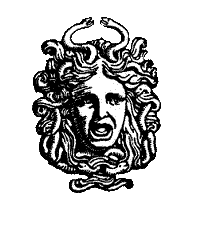Carl Jung > Archetypes
Anima Anima is the woman in men. There are certain
secondary female sexual features in male. On the psychological plane we talk about the soul, or sensuality as opposed to rationality and reason (animus). But anima is much more than the sexual and
psychological features. It is relational. That is, the anima archetype rules over the relationship between men and women. It is a kind of innate guide that leads one through the ambiguous path of meeting the woman and
interact with her.
The most known anima image is the mother archetype. It rules over the mother-son relationship. Therefore it is
projected onto the mother image. We know of such female figures from the cultural and religious themes. Virgin Mary or Mother Earth and other such mythical figures may lead us to the mother archetype.
Just like any archetype, the mother archetype has a positive as well as negative side. Her positive side is the birthing, nurturing and care giving, the comfort she brings to all souls
as the Holly Virgin. She is ready to sacrifice her life for the sake of her child. Or she is the savior of the decayed men - The Sophia or the Wisdom of God from the Gnostic mythology.
The other side, the negative one, is the devouring mother, depicted in such images as a creature of feminine nature such as Gorgon. A few words about the Gorgon:
In Greek mythology, a Gorgon [...] is a female creature. The name derives from the ancient Greek word gorgos, which means "dreadful". While
descriptions of Gorgons vary across Greek literature and occur in the earliest examples of Greek literature, the term commonly refers to any of three sisters who had hair made of living, venomous
snakes, as well as a horrifying visage that turned those who beheld her to stone. Traditionally, while two of the Gorgons were immortal, Stheno and Euryale, their sister Medusa was not, and she was
slain by the demigod and hero Perseus. (From Wikipedia)
Gorgons lead also to the seductive aspect of mother-son relationship. This is a very dangerous situation as the son will never be able to free himself from his mother eros thus
being doomed to the psychological death or the loss of his capability to evolve, from child to mature person. Carl Jung used to illustrate the destructive mother figure reminding us of She
(That Must Be Obeyed), the heroine of the Rider Haggard's well-known novel. Let me conclude with the phallic mother, a figure closer to the girl psychological history. She is the one who gave her
daughter the envied penis. As such she appears in the daughters' dreams and fantasies. In relationship with the boy, this figure represents a mixture of father and mother archetypes. Its constellation may be
linked with the missing of the natural father in the son's life and the compensation it should bring. Jung about Anima The anima is a factor of the utmost importance in the psychology of a man wherever emotions and affects are at work. She intensiӿes, exaggerates, falsiӿes, and mythologizes all emotional relations with his work and with other people of both sexes. The resultant fantasies and entanglements are all her doing. When the anima is strongly constellated, she softens the man's character and makes him touchy, irritable, moody, jealous, and unadjusted. He is then in a state of „discontent" and spreads discontent all around him. Sometimes the man's relationship to the woman who has caught his anima accounts for the existence of this syndrome. (The Archetypes and the Collective Unconscious, Princeton University Press, 1969, p. 70) Further resources
See also the Archetypes and the Collective Unconscious providing a collection of Jung's texts, here. |
© Copyright AROPA, 2025.
